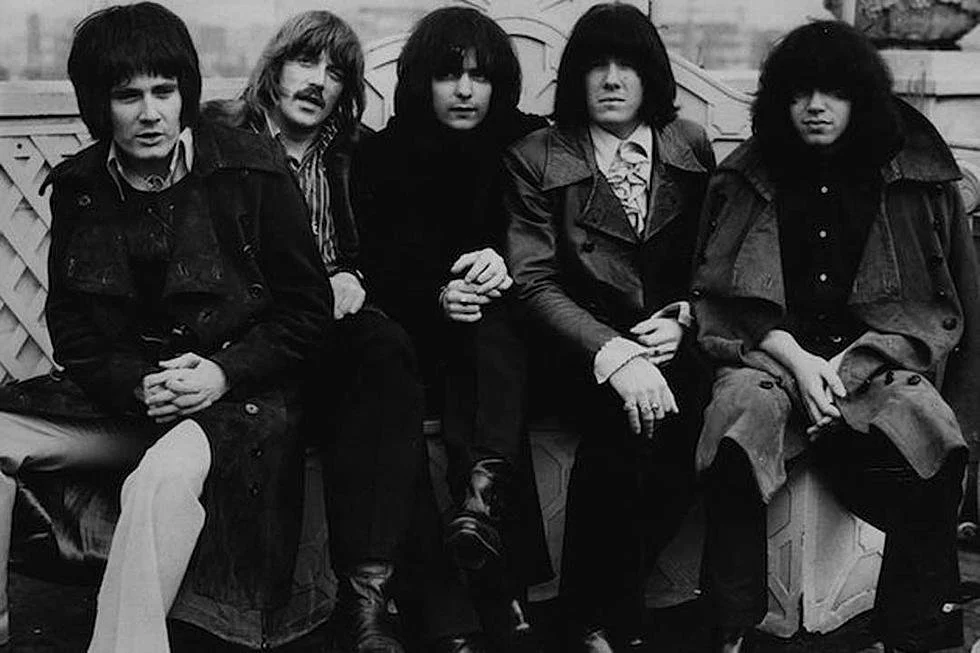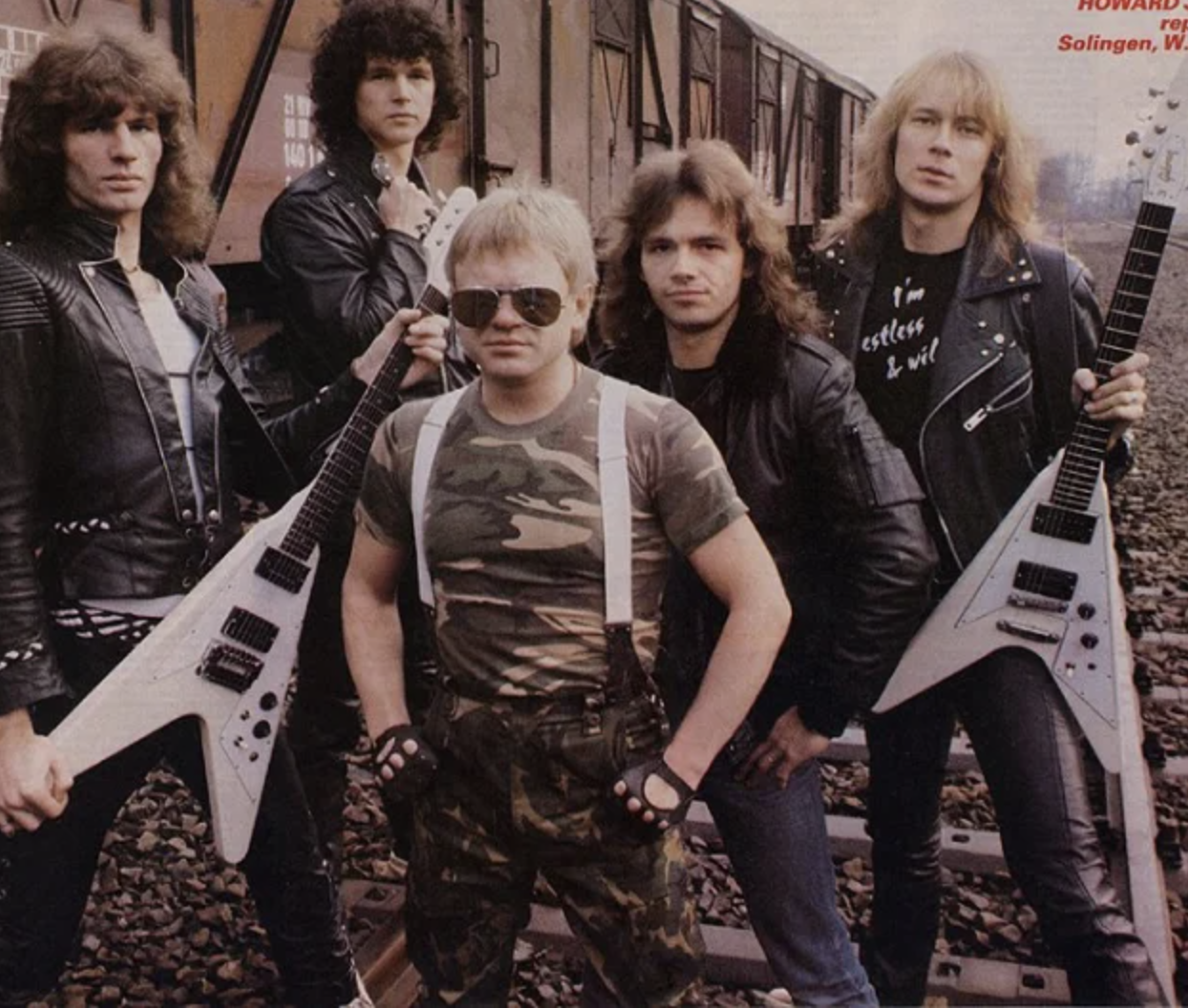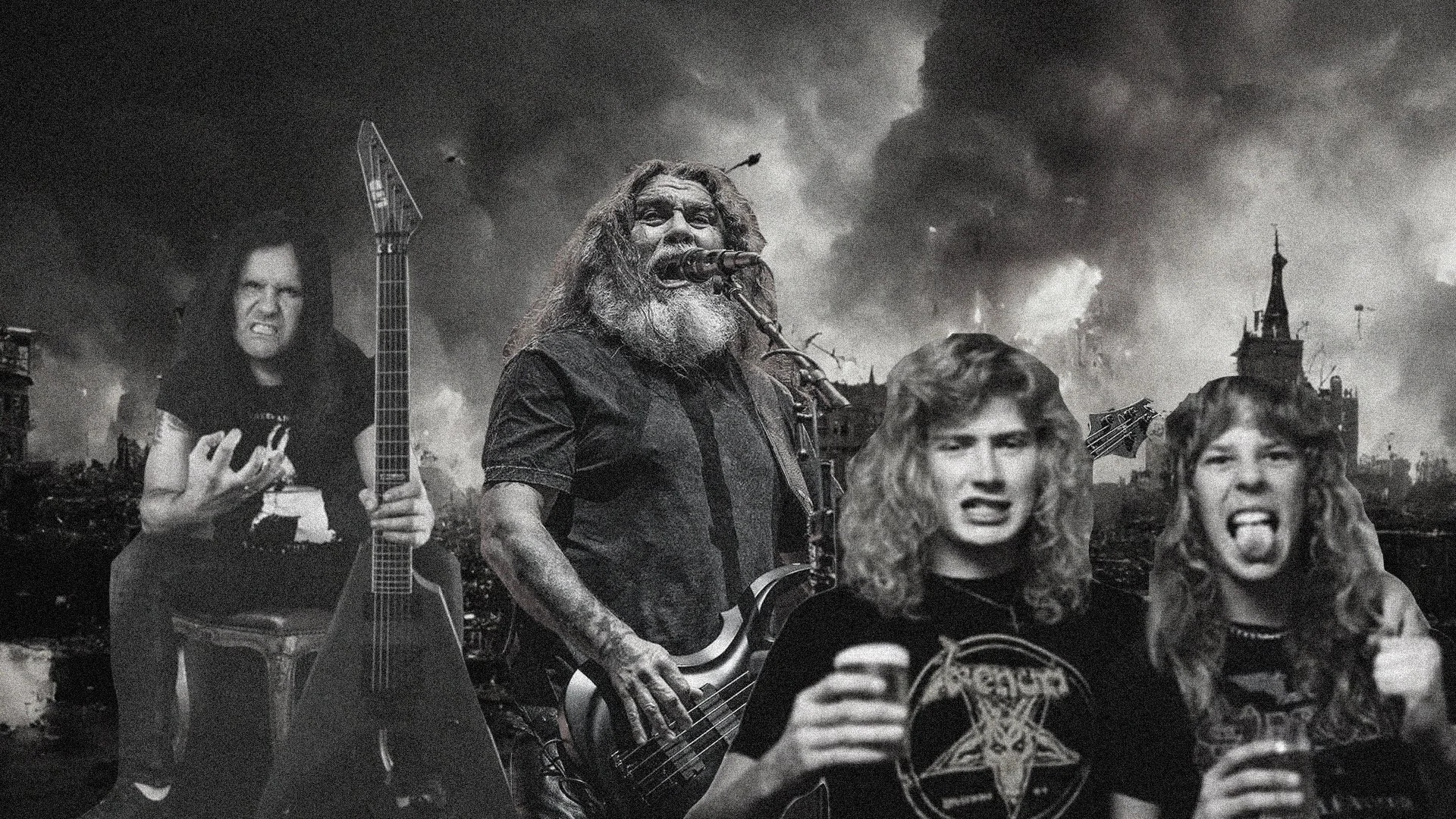A Subjective History of Speed Metal
Speed metal is more or less what happened when young (presumably British) musicians listened to Black Sabbath and asked themselves : “Man, I wonder what would happen if I tried to play this as fast as humanly possible.”
Asking oneself this kind of question is something dudes have been doing since the dawn of time
But the aforementioned young (presumably British) dudes asked themselves that question because of several cultural factors happening at the time. It was cool to play fast and stretch the idea of rock n’ roll to its conceptual extremes then. If Black Sabbath made metal dark and scary by inventing the idea of downtuned guitars to (then) inconceivable extremes, the next logical step was to turn it into an inevitable freight train.
What is speed metal exactly? Great question? It’s very much traditional heavy metal played at the fastest possible speed with an emphasis on technique, melody and musicality. It’s the genre that broke the virtuosic solos and the long, complex instrumental parts in metal songs, but it didn’t happen overnight and, most important, it never remained static. Lyrics were empowering, romanticized warrior-like, reclaiming a form of control in a society where you’re increasingly more of a victim to institutions and systemic circumstances.
If there is no speed metal scene today, it’s because it is the other great dead metal subgenre, but unlike NWOBHM, it actually turned into another genre which is alive and well today. Speed metal was inevitable and foundational to the idea of metal we entertain today, but it was also ephemeral. Let me explain how it came to be and how it transformed into one of metal’s sacred monsters like a goddamn werewolf.
…And Then There Was Speed
It wouldn’t be true or accurate to claim that punk rock influenced speed metal, but I don’t believe it could’ve existed without it. It’s an idea-that-influenced-and-idea. Because proto punk rock of the mid-to-late sixties/early seventies invented the idea that it was cool to play music furiously fast.
I’m talking here about bands like MC5 and The Stooges, which stripped classic rock n’ roll to its most basic elements and added anger and pace to it. That was a new idea then. A new way of conceptualizing one’s relationship to music. Rock n’ roll was initially a music meant to have fun and blow off some steam to. It was a good time. It elevated the soul in its own way, despite what your WWI-vet grandfather thought of it
But the sixties were also an era of great social upheaval and socially conscious kids with a chip on their shoulder also made music and that anger translated into a faster paced, confrontational and overall more in-your-face style of rock and that shit connected with audiences like that first puff of weed provided by a schoolyard dealer. It was something we were collectively ready for, like so many cultural breakthroughs that happened around that time.
That idea of playing fast and in-your-face music was almost immediately co-opted by other rock bands with less stripped down, confrontational aesthetic like Budgie, Queen and Deep Purple in order to explore new ideas within their own creative paradigm. It’s how the almighty Purple came to write the aptly-named song Speed King in 1969 at just about the same time as Black Sabbath were writing and recording their debut album, which de facto invented heavy metal.
Speed metal would officially become a genre a couple years down the line, but the idea of it was born when psychedelic and progressive rock of the late sixties would meet punk rock to create something new, like two stars colliding together to create a new galaxy. Sabbath’s contribution to it would be crucial, but also mainly thematic and cosmetic.
NWOBHM and the Motörhead Quandary
So far, Motörhead has been in every chapter of this odyssey because they’re extremely important and foundational to metal even if they never considered themselves a metal band to properly speak of. I’m going to keep talking about them in this chapter and beyond, because they’re that important and foundational. Remember when I claimed a young, presumably British musician invented speed metal by trying to play Black Sabbath as fast as humanly possible?
I was referring to Ian Fraser Kilmister, the architect and godfather of extreme metal.
The man we refer to as Lemmy left space rock titans Hawkwind for a specific reason: he wanted to take the idea of playing fast rock and turn it into the playing-the-fastest-most-absolutely-dirtiest-rock that could ever be conceptualized. Not only he achieved his goal and became immortal for it, but he busted open the doors of extreme thinking in metal. Without him, thrash, death and black metal wouldn’t be what they are today.
Lemmy took an idea that was floating around in the seventies, systematized it and weaponized it in order to create something precise. This precision is also very metal to properly speak of, because God knows metalheads love to put labels onto everything and nothing. But that werewolf turn from rock to metal that was going on since Black Sabbath first played the devil’s notes in 1970 really crystallized with Motörhead.
Even if they called themselves rock n’ roll, Motörhead were, in many regards, the first self-aware metal band.
Other important figures from the NWOBHM scenes would emerge to become foundational figures of speed metal. Most notably Judas Priest. One of these hybrid extreme, tormented rock bands at the start, Priest slammed the throttle in their own way on Sad Wings of Destiny in 1976 and even more so on British Steel in 1980 and made it cool to be fast and exciting. They were the first band to really give Motörhead a run for their money in terms of rawness and aggression. Notably on the song Exciter in 1978.
So, it would be lazy and inaccurate to say speed metal was born from NWOBHM, but it’s two NWOBHM bands who crystallized the idea of speed metal and brought it to the masses. Say what you want about the Brits, but they’re metal as fuck.
Anvil, Accept and the great looming evil of thrash
Motörhead and Judas Priest were a tipping point in the creation of extreme metal as we know it today. Their music made every angry, artistic kid around the world in the eighties go: "Ah. This is something I could also do."
The speed metal movement internationalized almost overnight. It went FAST (pun intended). Exciter and Anvil happened in Canada almost as soon as they heard the Priest song of the same name. Accept was formed in Germany in 1976, but they emerged at more or less the same time and they would be super duper important.
See, Accept and the almighty Udo Dirkschneider would pioneer lyrical themes that were a little off-base for what was considered speed metal, but that would become foundational for the more extreme genres it foreshadowed. Their breakneck song Fast As A Shark notably depicted the actions of a serial killer prowling the streets of the city, which would inspired even angrier kids around the world to come up with even more fucked up song ideas of their own.
I don’t know how accurate Lords of Chaos was (probably not very), but the movie showed then teenagers members of Mayhem listening to Fast As A Shark during a party, so I like to think it gave them permissions and inspired them to write their gory masterpieces like Deathcrush, Necrolust or Chainsaw Gutsfuck, which were all released like four or five years later.
Accept is not the only important speed metal band to come out of Germany. The riffing geniuses of Running Wild were formed in the same year (1976) and their albums Gates to Purgatory, Branded and Exiled and Dead Or Glory would turn out to be super influential for so many bands and genres of metal that would come in its trail. Running Wild weren’t as dark and tormented as Motörhead or Accept (well, except for that song about balls they wrote) but their investment into craftsmanship and the complexity of their songwriting would prove to be as important as Accept’s morbid themes.
Although they are power metal forefathers, Helloween are also technically a speed metal band. At least, they were on their first record Walls of Jericho in 1985. That record would come to define what power metal is supposed to sound like, with the high vocals and flowing guitar solos, but dirty and powerful bangers like Ride the Sky couldn’t be anymore different from the songs of Stratovarius, Sonata Arctica and other "cleaner" artists.
The technicality and the innovations of bands like Running Wild, Helloween or Los Angeles’ Agent Steele (what a wonderfully eighties name) foreshadowed the idea of power metal, but it also shocked speed metal into a technical revolution, which coupled with the extreme themes and ideas of bands like Accept and Motörhead would usher what I consider the first real extreme metal genre in the eighties: thrash metal. But that’s a conversation we need to keep for another day.
A crash course in speed metal
Here are three songs you can listen to in order to get an idea of what speed metal is and what it is supposed to sound like. Unlike NWOBHM, you can get a pretty solid idea of what it actually is.
Judas Priest - Exciter : Double bass drum, high flying guitar riff, I personally find that Exciter is somewhat of a ripoff of Motörhead, but it foreshadowed a new and exciting approach for the almighty Priest. In the eighties, they would go all guns blazing and record speed metal immortals like Electric Eye, Turbo Lover and Painkiller (technically thrash, technically released in 1990, but who fucking cares?) Exciter is an important song and, most important, it’s pure speed metal. It would inspire many, many bands
Running Wild - Victim of States Power : Fast, aggressive and riffy as fuck. The lower vocals and extreme dedication to complex, but catchy guitar work are what makes this song such a staple of speed metal. It’s also quite foundational in establishing the structure of extreme metal songs.
Helloween - Ride The Sky : Is it the last true speed metal song? It is the last speed metal hit for sure. It’s an extremely muscular track that seems to be in perfect equilibrium between power metal and thrash metal while respecting the melodic tenets of speed metal. It’s one of the songs from this era that aged the best too.
That’s it folks. This was speed metal. I feel like I did a much better job at breaking it down than I did for NWOBHM, mostly because it’s something more precise and that its influence can still be felt in today’s extreme metal. Where do we go from here? There are two directions we can take this baby in. I lied, by the way. Speed metal never died, it evolved like the most evil Pokemon you hadn’t heard of yet. There are two directions speed metal evolved in: power metal and thrash metal. Visit the site next month to know which one we’ll delve into first. Stay hard!










